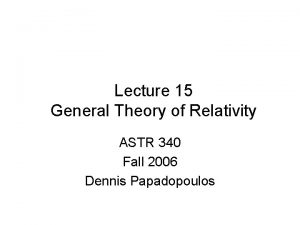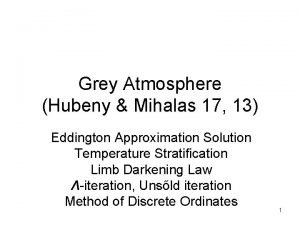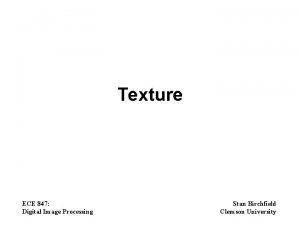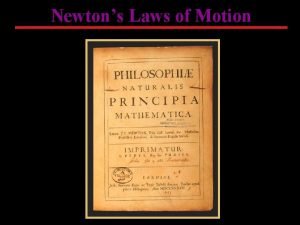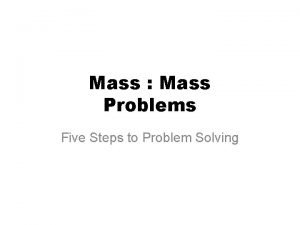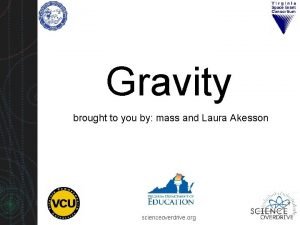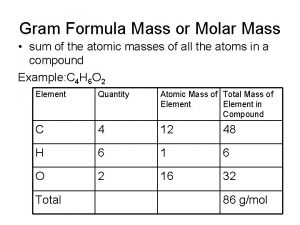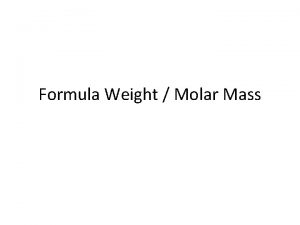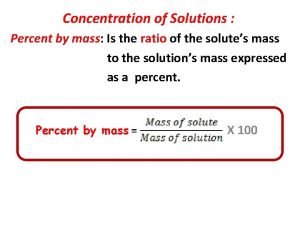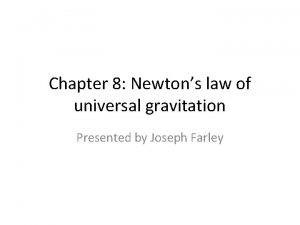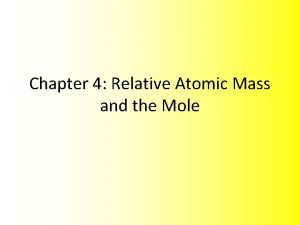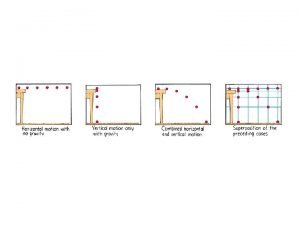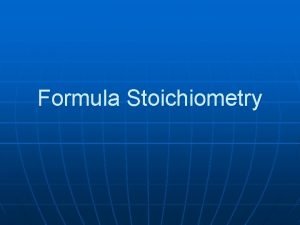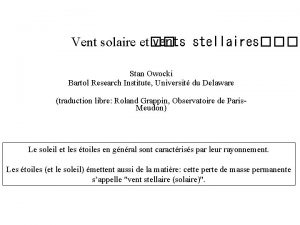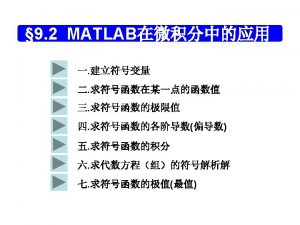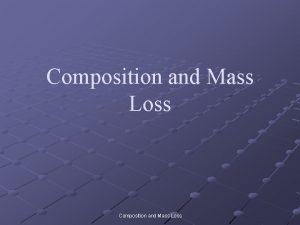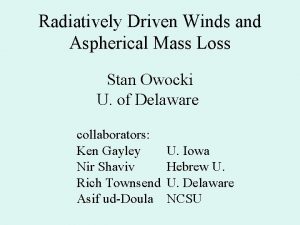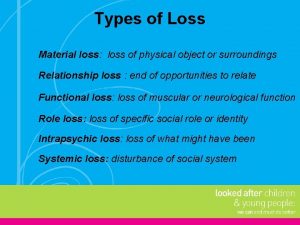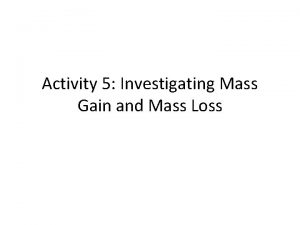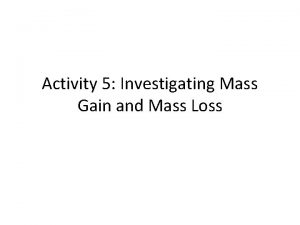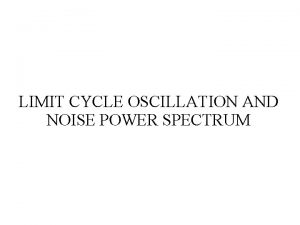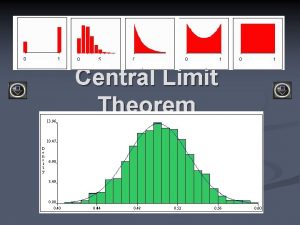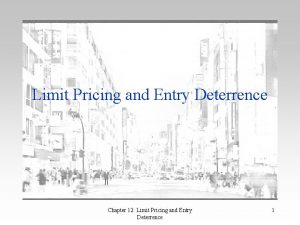Mass loss and the Eddington Limit Stan Owocki








































- Slides: 40

Mass loss and the Eddington Limit Stan Owocki Bartol Research Institute University of Delaware Collaborators: Nir Shaviv Ken Gayley A-J van Marle Rich Townsend Nathan Smith Hebrew U. , Israel U. Iowa U. Delaware U. C. Berkley

Eddington limit Radiative Force Gravitational Force

Stellar Luminosity vs. Mass L ~ M 3. 5

Basic Stellar Structure -> L ~ Hydrostatic equilibrium (G<<1): => => Radiative diffusion: => => 3+ M

Mass-Luminosity Relation 1 ~M ~M 3. 5 Pgas > Prad observed upper limit from young, dense clusters Pgas < Prad

Driving by Line-Opacity Optically thin Optically thick

CAK Line-Driven Wind

Mdot increases with e

Summary: Key CAK Scaling Results e. g. , for a=1/2 Mass Flux: Wind Speed:

Key points • Stars with M ~ 100 Msun have L ~ 106 Lsun => near Eddington limit! • Suggests natural explanation why we don’t see stars much more luminous (& massive) • Prad >Pgas => Instabilities => Extreme mass loss • Can not be line-driven? • But continuum driving needs to be regulated.

How is such a wind affected by (rapid) stellar rotation?

Gravity Darkening increasing stellar rotation

Effect of gravity darkening on line-driven mass flux Recall: e. g. , for w/o gravity darkening, if F(q)=const. highest at equator w/ gravity darkening, if F(q)~geff(q) highest at pole

Effect of rotation on flow speed *

Eta Carinae

Historical Light Curve ~ LEdd

Smith et al. 2002

3 Key points about h Car’s eruption • Mdot > 103 Mdot(CAK) Þ can NOT be line-driven! • Lobs > LEdd => “super-Eddington” (by factor > 5!) • Lobs ~ Mdot. V 2/2 ÞMdot limited by energy or “photon-tiring”

Stagnation of photon-tired outflow


Photon Tiring & Flow Stagnation

Super-Eddington Continuum-Driven Winds moderated by “porosity”

G. Dinderman Sky & Tel.

Porosity • Same amount of material • More light gets through Incident light • Less interaction between matter and light

Porous envelopes l=0. 05 r h=0. 5 r h l/f h=r h=2 r l=0. 1 r l=0. 2 r

Expanding Porous envelopes h=0. 5 r h l/f h=r h=2 r l=0. 05 r l=0. 1 r l=0. 2 r

Monte Carlo results for eff. opacity vs. density in a porous medium “critical density rc ~1/r Log(eff. opacity) blobs opt. thin blobs opt. thick Log(average density)

Power-law porosity At sonic point:

Effect of gravity darkening on porosity-moderated mass flux w/ gravity darkening, if F(q)~geff(q) highest at pole

Eta Carinae

Summary Themes • Continuum vs. Line driving • Prolate vs. Oblate mass loss • Porous vs. Smooth medium

Future Work • Radiation hydro simulations of porous driving • Cause of L > LEdd? – Interior vs. envelope; energy source • Cause of rapid rotation – Angular momentum loss/gain • Implications for: – Collapse of rotating core, Gamma Ray Bursts – Low-metalicity mass loss, First Stars

X-ray lightcurve for h Car



POWR model for opacity

POWR model of radiative flux

POWR model of radiative force

Mdot increases with Edd

Mdot increases with e
 Stan owocki
Stan owocki Postulates of special theory of relativity
Postulates of special theory of relativity Eddington approximation grey atmosphere
Eddington approximation grey atmosphere If lclp is negative number, we set the lclp = 0. why?
If lclp is negative number, we set the lclp = 0. why? Natural variations operations management
Natural variations operations management Scrap account
Scrap account Grafik fungsi limit
Grafik fungsi limit Relative atomic mass of beryllium
Relative atomic mass of beryllium Differentiate between atomic number and mass number
Differentiate between atomic number and mass number Atomic mass of oxygen
Atomic mass of oxygen Atomic mass and mass number
Atomic mass and mass number Fourier transform formula
Fourier transform formula Stan and ute lawrence
Stan and ute lawrence Mass to mass equation
Mass to mass equation Percent composition by mass
Percent composition by mass Inertial mass vs gravitational mass
Inertial mass vs gravitational mass Grams to moles conversion
Grams to moles conversion Conversion from grams to moles
Conversion from grams to moles Mass/molar mass
Mass/molar mass Convert mass to moles
Convert mass to moles Units of molar mass
Units of molar mass Mass/mass problems
Mass/mass problems Gravitational mass vs inertial mass
Gravitational mass vs inertial mass Formula mass vs molecular mass
Formula mass vs molecular mass Formula mass vs molecular mass
Formula mass vs molecular mass What is atomicity
What is atomicity Mass number formula
Mass number formula Percent concentration formula
Percent concentration formula Inertial mass vs gravitational mass
Inertial mass vs gravitational mass Co2 relative molecular mass
Co2 relative molecular mass Atomic mass vs molar mass
Atomic mass vs molar mass Stoichiometry worksheet #2 (mole-mass mass-mole problems)
Stoichiometry worksheet #2 (mole-mass mass-mole problems) Does an iron nail gain mass or lose mass when it rusts
Does an iron nail gain mass or lose mass when it rusts A rocket of mass 12000 kg accelerates vertically
A rocket of mass 12000 kg accelerates vertically Formula mass vs gram formula mass
Formula mass vs gram formula mass Formula mass vs gram formula mass
Formula mass vs gram formula mass Cold air mass overtakes warm air mass
Cold air mass overtakes warm air mass Hát kết hợp bộ gõ cơ thể
Hát kết hợp bộ gõ cơ thể Frameset trong html5
Frameset trong html5 Bổ thể
Bổ thể Tỉ lệ cơ thể trẻ em
Tỉ lệ cơ thể trẻ em

